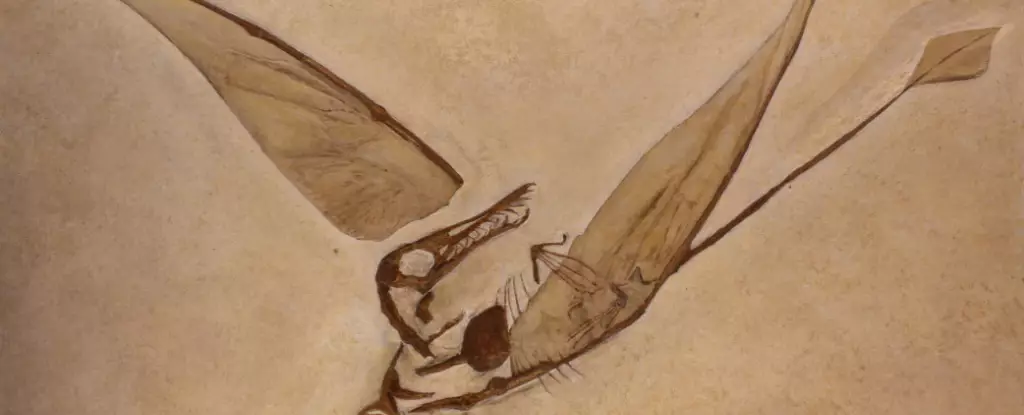Pterosaurs, the flying reptiles that dominated the skies long before birds and bats, have always been a subject of fascination for paleontologists. While feathers and hollow bones have been credited for their aerial prowess, a recent study has shed light on a lesser-known yet crucial aspect of their flight capabilities – a lattice-like structure in their tails that provided stability and control during flight.
Unlike birds and bats, pterosaurs had broad-ended tails that could have easily fluttered in the wind, causing instability. However, the discovery of a unique lattice structure within their tail vanes suggests that these flying reptiles had a sophisticated mechanism to prevent such fluttering. The lattice, composed of thick, vertical rods and thinner fibers, created a cross-linked pattern that stiffened the tail vane, reducing drag and aiding in stabilizing flight.
The rarity of well-preserved pterosaur fossils has limited our understanding of their soft tissues. However, the study by University of Edinburgh researchers revealed four exceptional specimens that retained details of the thin, soft tissue tail vane. Through imaging techniques, the researchers identified the intricate lattice structure within the tail vane, providing insights into how early pterosaurs achieved flight stability.
The discovery of the cross-linked lattice in pterosaur tail vanes has implications for understanding the evolutionary origins of this structure. Unlike later pterosaurs and modern birds and bats, early pterosaurs possessed a unique tail vane that evolved from a single contiguous structure rather than a combination of scales or feather-like integuments. This suggests a distinct evolutionary path for pterosaurs in developing flight adaptations.
Interestingly, the researchers also noted similarities between pterosaur tail vanes and the flukes of cetaceans. The presence of “fleshy folds” at the end of pterosaur tail vanes indicates a possible convergence in evolution with the structures that help whales and dolphins glide through water. This parallel evolution highlights the diverse adaptations that evolved in response to the demands of aerial and aquatic environments.
In addition to the tail vane, pterosaurs relied on a tendon called the propatagium to control flight take-off and landing. This tendon stretched along the leading edge of the wing, connecting key joints and altering airflow over the wings. While birds and bats also have propatagia on their wings, the unique structure and function of the pterosaur propatagium set these flying reptiles apart from their modern counterparts.
The recent study on pterosaur flight mechanisms has provided valuable insights into the evolutionary adaptations that allowed these ancient reptiles to dominate the skies. By unraveling the role of the lattice-like structure in their tail vanes and the function of the propatagium, researchers have gained a deeper understanding of how pterosaurs achieved flight stability and control. As paleontologists continue to uncover new fossils and advance imaging techniques, the secrets of pterosaur flight evolution are sure to yield further surprises and revelations.


Leave a Reply